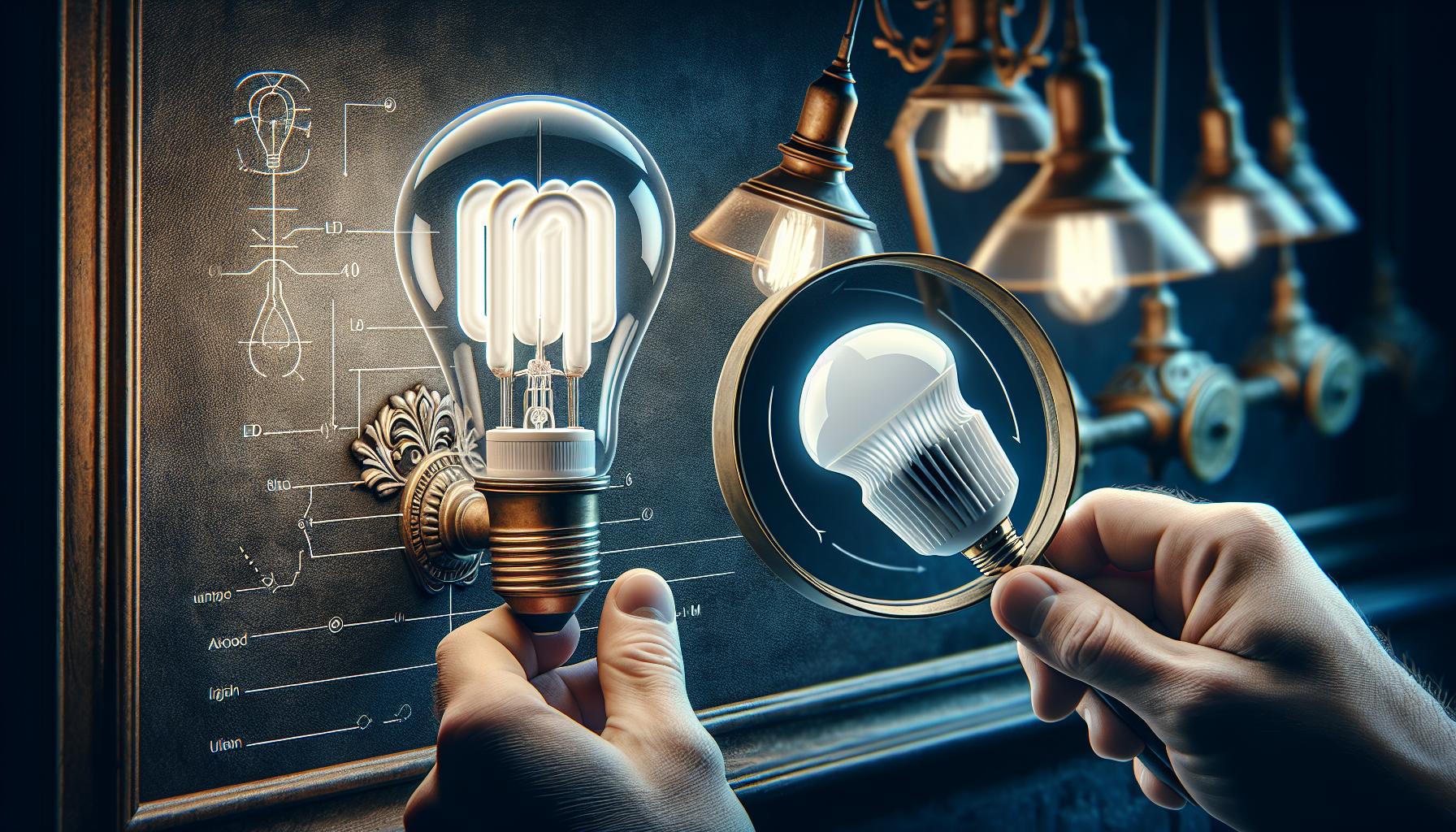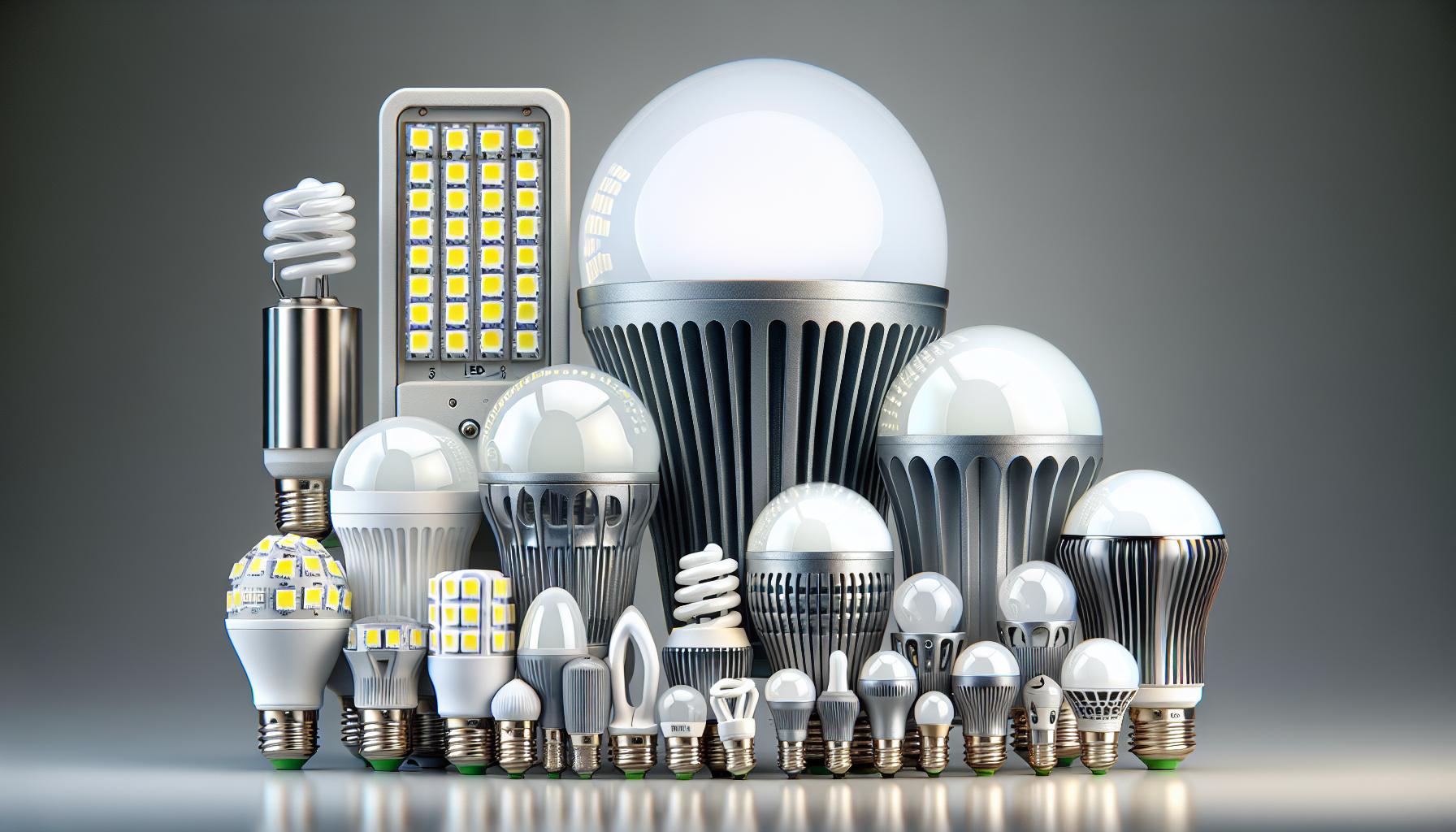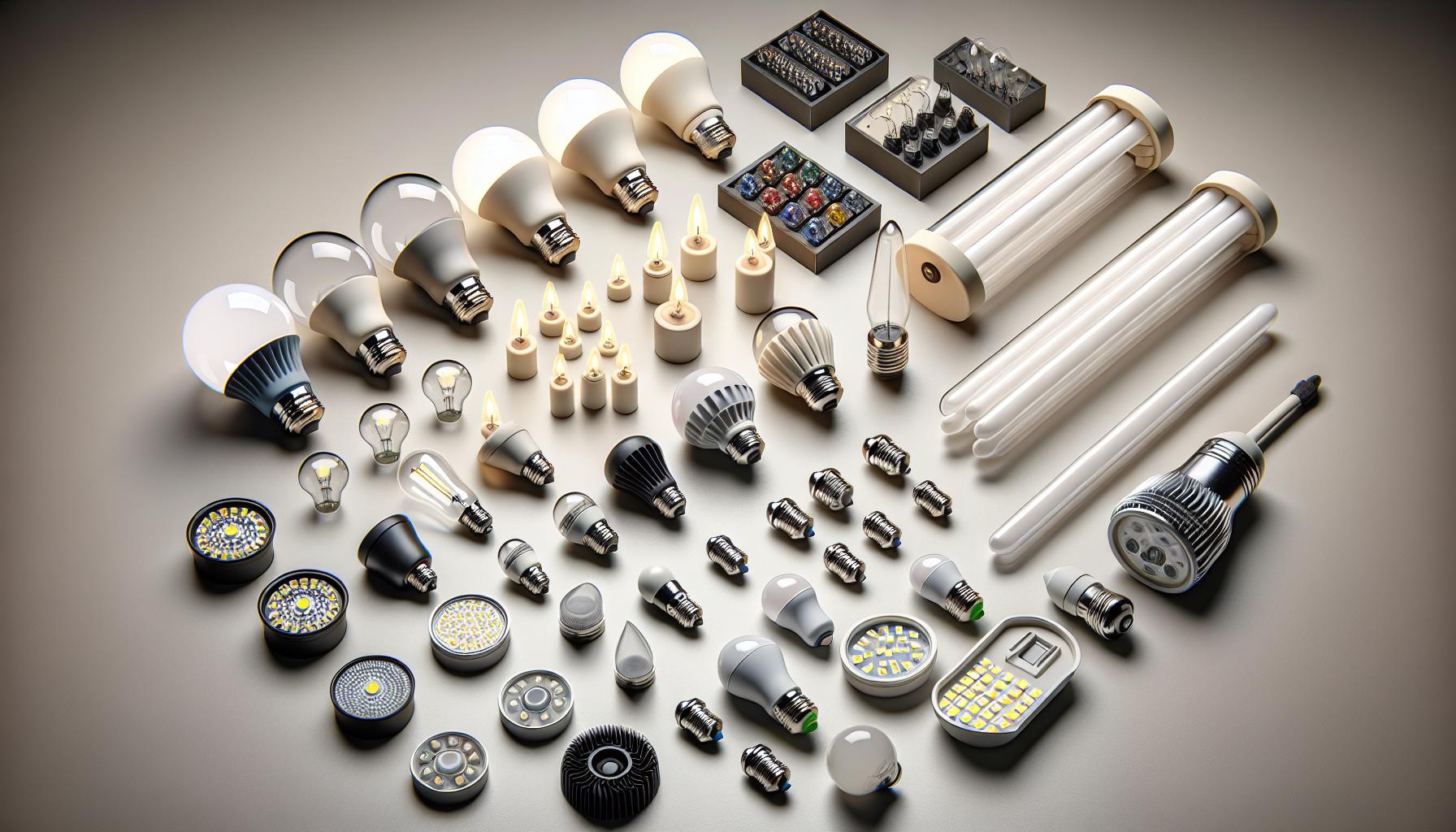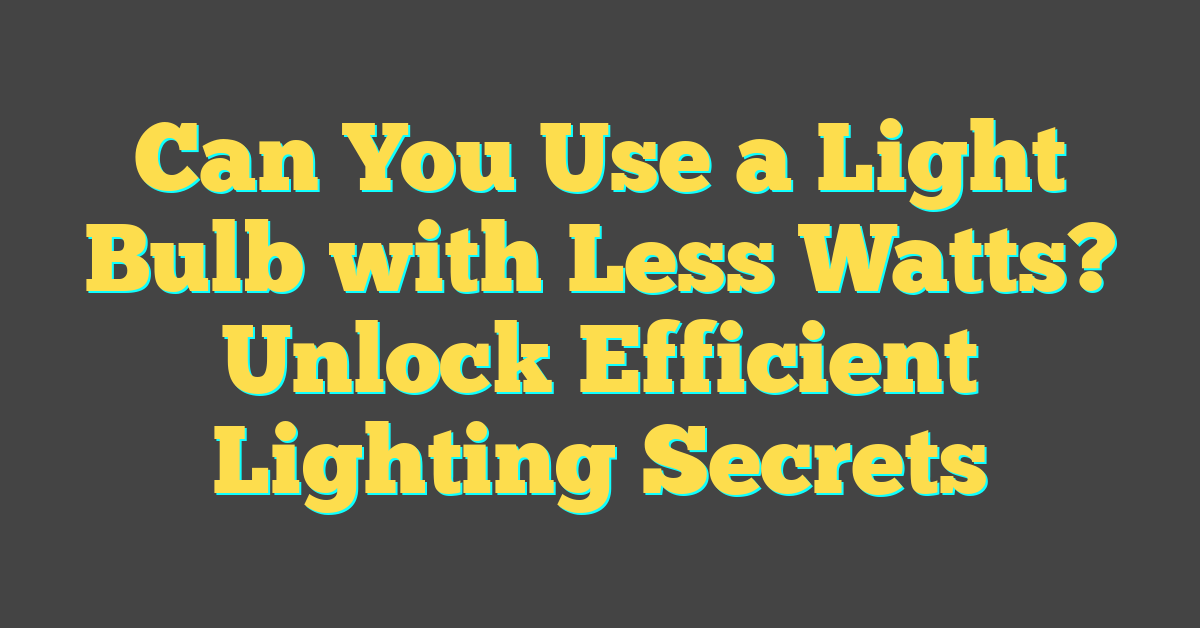Ever wondered if those energy-saving LED bulbs you’ve heard so much about can fit into your old lamp or ceiling fixture? You’re not alone. Swapping out traditional bulbs for LEDs is a bright idea for saving energy and money, but there’s a bit more to it than a simple switcheroo.

Before you dive into a lighting overhaul, it’s essential to understand the compatibility between LED bulbs and your existing fixtures. It’s not just about the bulb fitting into the socket—it’s about ensuring everything works efficiently and safely. Let’s shed some light on the subject and help you make an informed decision.
Understanding LED Light Bulbs
Stepping into the world of LEDs, you’ll notice that LED light bulbs are heralded for their energy efficiency and longevity. But what makes an LED bulb different from its incandescent or fluorescent predecessors? An LED, or Light Emitting Diode, illuminates by passing a current through a semiconductor material which then emits light. Unlike traditional bulbs, LEDs don’t have a filament that will burn out, and they don’t get especially hot.
When you’re sizing up whether to switch to LEDs, consider their unique qualities:
- LEDs can emit light in a specific direction, meaning less wasted energy and light.
- They come to full brightness instantly without the warm-up time needed by compact fluorescent lamps (CFLs).
- LEDs are available in a range of color temperatures, from cool to warm, mirroring the full spectrum of natural light.
As a lighting enthusiast, you know that choosing the right color temperature can change the ambience of a room. LEDs broaden your horizons, offering a palette for any mood or function. It’s important to note, however, that these innovative light sources have electrical characteristics that differ from incandescents. This is where your compatibility check comes in.
For example, dimmable LEDs require compatible dimmer switches to function correctly. An incompatible dimmer can lead to flickering lights or even shorten the lifespan of your LED bulb. When diving into a lighting project, have you ever thought about heat dissipation? LED bulbs do generate heat, and it’s critical for their performance and durability that this heat is managed properly. The design of LED bulbs includes heat sinks that help dissipate heat away from the light source, protecting the LED from overheating.
When considering an upgrade to LED lighting in your home, remember that while the bulb may fit the socket, the fixture must sustain the proper operation of the bulb. Poorly ventilated or enclosed fixtures can shorten the life of an LED bulb, just as they would for any other type of light bulb. Always make sure you’re pairing your LED with a fixture that can handle its unique needs. Armed with this knowledge, you’re well-equipped to make informed decisions for your lightning makeover.
The Importance of Fixture Compatibility

You may be eager to upgrade your home with the sleek, efficient appeal of LED light bulbs – and your enthusiasm is justified. However, not all fixtures welcome these modern illuminators with open arms. An often-overlooked aspect of LED integration is fixture compatibility, a vital component in ensuring that the bulb’s potential is fully realized.
Firstly, enclosures must accommodate LED heat management requirements. While LEDs are cooler than traditional bulbs, they still generate heat, which is dissipated via the base. Closed fixtures that are not designed for LEDs can trap this heat, reducing the bulb’s lifespan and performance.
Fixture design also plays a crucial role. Antique and vintage fixtures, with their undeniable charm, might have narrower or shallower housings not suited for LED bulb sizes and shapes. Sometimes, you can find specially-shaped LED bulbs intended for these types of fixtures.
Here’s what to look for to ensure proper functionality:
- Check for adequate airflow around the bulb.
- Inspect the fixture size and shape to make sure the LED bulb will fit.
- Verify that the fixture supports the bulb’s wattage – even though LEDs consume less energy, ensuring compatibility is essential for safety.
Most importantly, take a moment to examine the fixture’s voltage and wiring. LEDs require a constant current to operate efficiently and old or outdated wiring systems might not provide this, leading to flickering or prematurely failed bulbs. Some fixtures could need a rewiring job to be LED-ready.
In essence, ensuring your fixtures can handle LED bulbs is about more than just screwing in a new light. It’s about marrying the old with the new, leveraging the fine-tuned design of modern lighting. By paying attention to fixture compatibility, you’re crafting an environment with optimal lighting while sidestepping any potential electrical faux pas. With careful consideration, your LED retrofit can bring out the best in both your bulbs and fixtures.
Factors to Consider Before Installing LED Bulbs

« Can You Put Grow Light Bulbs in a Regular Lamp? Find Out How
What Light Bulb is Yellow? Find Your Perfect Golden Glow »
When you’re gearing up to upgrade to LED bulbs, it’s crucial to consider several factors to ensure that your transition is as smooth as a dimmable switch on a cozy evening. Compatibility is your keyword here. Just like pairing a fine wine with the perfect dish, matching LED bulbs to the correct fixtures makes all the difference in your home’s ambiance and efficiency.
First and foremost, check the fixture’s maximum wattage rating. LED bulbs consume less power than traditional incandescent ones, but it’s still essential to ensure they fall within the range your fixture can handle. Overlooking this can lead to performance issues or, worse, safety hazards. Here’s a nifty chart to help you keep track:
| Incandescent Wattage | Equivalent LED Wattage |
|---|---|
| 60W | 8-12W |
| 75W | 10-15W |
| 100W | 16-20W |
| 150W | 25-28W |
Remember that the base type of the bulb needs to be on your radar as well. Most homes will feature either screw or pin type bases. You don’t want to be stuck with a bulb that stands out like a sore thumb because it doesn’t fit!
You should also mind the dimmer compatibility if you’re a fan of setting the mood with adjustable lighting. Not all LED bulbs dim the same way, and some may require a specific type of dimmer switch to avoid flickering or reduced lifespan.
Look Out for Temperature Constraints
LEDs are sensitive souls when it comes to temperature. Your fixture should provide enough heat dissipation to prevent the LED bulbs from overheating. Fixtures sealed for outdoor use or recessed cans might need special attention as their enclosed spaces could spell trouble for heat management.
Lastly, dive into the color temperature for creating the perfect atmosphere. Measured in Kelvins, LED bulbs range from warm yellow tones to crisp daylight hues, which can dramatically affect the feel of your space. Choose wisely to compliment your decor and personal taste.
Taking these factors to heart before installing LED bulbs can save you from the headache of returns, reinstallation, and frustration. Plus, you’ll be one step closer to lighting nirvana in your DIY home projects.
Different Types of LED Light Bulbs

When you’re delving into the world of LEDs, you’ll find an array of bulb types each designed with specific characteristics and purposes in mind. As a passionate DIY enthusiast and lighting expert, you’ll appreciate the sheer variety and innovation each type of LED offers for your projects.
Standard A-Type LEDs are your go-to for general lighting needs. These mimic the classic bulb shape and easily retrofit into existing lamps, ceiling fixtures, and other standard sockets. With a familiar design, they’re the easiest way to transition to LED technology without any hassle.
Reflector bulbs, identified as R-Type and often used in recessed or track lighting, provide directional lighting which is perfect for accentuating artwork or focal points within a room. Their design concentrates light into a specific area, creating a spotlight effect that can entirely transform a space.
For a more decorative touch, Candle or C-Type LEDs bring a touch of elegance to chandeliers and sconces with their flame-like shape. Don’t forget that certain decorative bulbs might be less about brightness and more for ambiance, so it’d be wise to consider their lumens and color temperature for your desired effect.
In spaces demanding a rugged bulb, PAR LEDs offer a robust solution with a weather-resistant build ideal for outdoor floodlights or security fixtures. Their durable construction means they can handle a bit of rough weather without skipping a beat.
Lastly, Tube LEDs or T-Lights replace fluorescent bulbs in larger fixtures, like those found in kitchens or garages. They are known for their even light distribution and minimal glare — a boon for areas requiring consistent, quality light without the flicker associated with fluorescent tubes.
Each bulb type, while sharing the core benefits of LED efficiency and longevity, comes with distinct advantages catered to different lighting needs. Your specific fixture may call for a certain kind of LED bulb, so it’s crucial to match the right type with the required functionality. Making the right choice ensures your lighting not only looks great but operates seamlessly with your existing fixtures.
Conclusion
So there you have it! You’re now equipped with the knowledge to make an informed decision when it comes to fitting LED light bulbs into your existing fixtures. Remember, it’s not always a one-size-fits-all situation; taking the time to match the right LED bulb to your fixture will save you from unnecessary headaches down the road. Make sure you’re checking those key factors like airflow, size, voltage, and dimmer compatibility. With a little care and attention to detail, you’ll be enjoying the benefits of LED lighting in no time—happy illuminating!
Frequently Asked Questions
Can all light fixtures use LED bulbs?
No, not all light fixtures are suitable for LED bulbs. It’s crucial to check compatibility to ensure optimal lighting and avoid electrical issues.
What should I check for when switching to LED bulbs?
Ensure proper airflow, check the fixture’s size and shape compatibility, verify voltage and wiring, and make sure the dimmer and color temperature are compatible.
Why is it important to match the fixture with the right LED bulb type?
Matching the fixture with the right LED bulb type is important to ensure the light operates properly and efficiently within its intended purpose.
How can I tell if my fixture is compatible with LED bulbs?
Check the fixture for LED compatibility by examining airflow, the fixture’s physical dimensions, voltage requirements, and if it’s dimmable, its compatibility with LED dimmers.
What are the different types of LED light bulbs?
The different types of LED light bulbs include standard A-Type LEDs, reflector bulbs, candle or C-type LEDs, PAR LEDs, and tube LEDs, each designed for specific fixtures and lighting needs.




